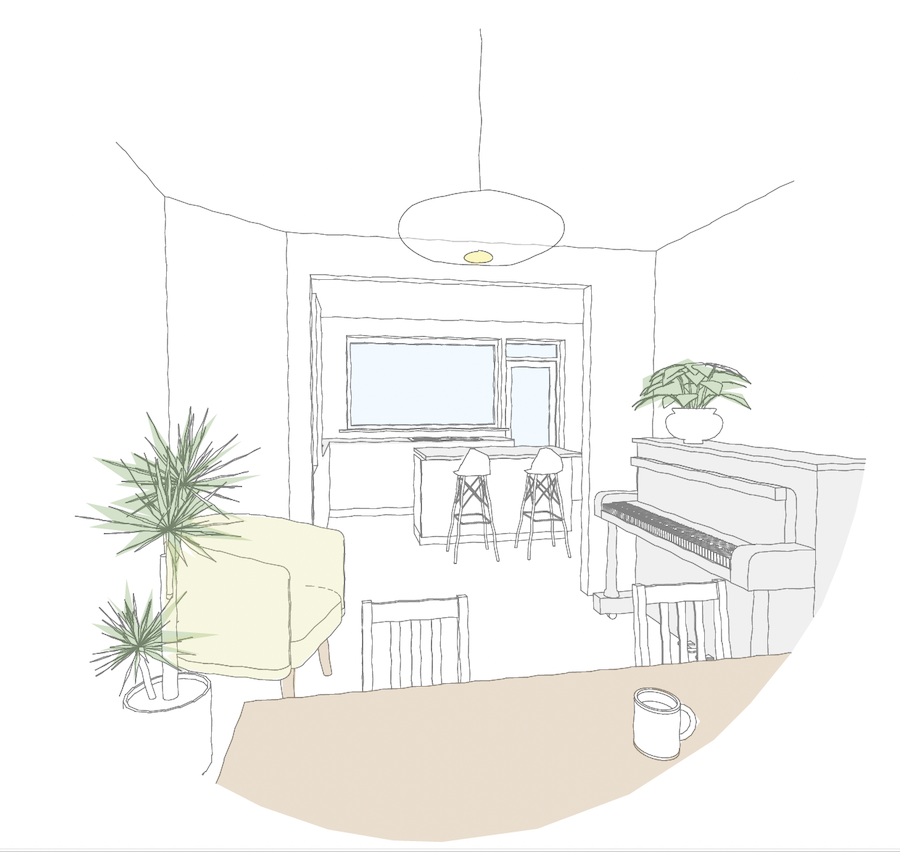Transforming your living space goes beyond aesthetics; it's an act of commitment to the well-being of our planet. In this detailed guide, we'll walk you through adopting eco-friendly practices in your renovation endeavors. We aim to combine style with sustainability, making sure every choice is a mindful one.
Discover some of our past Cornish renovations for inspiration to create your own.
How can you renovate sustainably?
Assess your current building
The first step towards a sustainable renovation is understanding your existing space. Evaluating the structural integrity, insulation, and energy efficiency can unearth opportunities for sustainable improvements. Consider the age of your home and the materials used in its construction. Older buildings might need more attention in terms of energy efficiency, while newer constructions might only require minor tweaks.
Assess what you need from your home
Identify your needs versus wants. This insight is crucial in avoiding over-consumption and unnecessary construction. Do you need more space, or can you rearrange existing rooms? Understanding your lifestyle and how you interact with your space can lead to more mindful and sustainable renovation choices.
Have a clear end goal in mind
Sustainability is often about simplicity and efficiency. A clear vision helps in minimising waste, reducing costs, and focusing on eco-friendly choices. This approach encourages the reuse of materials, reduces the demand for new resources, and minimises the environmental impact of your renovation.

What are the eco-friendly materials for remodelling?
Natural materials
Choosing natural materials like bamboo, cork, reclaimed wood, or natural stone can significantly reduce the environmental impact of your renovation. These materials are not only sustainable but also add unique character and warmth to your home. They often come with the added benefit of being low in volatile organic compounds (VOCs), which contributes to better indoor air quality.
Locally sourced products
Opting for locally sourced materials reduces transportation emissions, supports local economies, and often results in a smaller carbon footprint. It also fosters a connection between your home and the local environment and culture.
Reuse existing materials
Before discarding anything, consider if it can be repurposed. Old wood can be transformed into furniture, and existing tiles can be creatively rearranged. This approach not only preserves resources but also adds a story and a sense of history to your home.
Carefully assess existing fabric and choose materials to suit
Understand the existing architecture and design of your home. Selecting materials that complement the existing structure can enhance durability and functionality. For instance, using breathable materials in an older home can prevent moisture problems, preserving the structure and improving its lifespan.
Should we be building less?
Work with your existing building
Renovating within the confines of your existing structure challenges you to be creative and resourceful. It’s about enhancing what you already have rather than expanding. This method preserves land resources, maintains natural habitats, and reduces the overall environmental impact when compared to expanding or creating a new build.
Assess the efficiency of your existing use of your home
Often, the space you need is already there; it's just not being used efficiently. By reimagining and repurposing existing spaces, you can avoid unnecessary construction. For instance, an underused attic can be converted into a home office, or a basement can become a family room.
Create multifunctional spaces
The concept of multifunctional spaces is integral to sustainable living. It reduces the need for more square footage and encourages a more minimalist and efficient lifestyle. Spaces that adapt to various needs not only save resources but also allow for a more dynamic and flexible living environment.
As we conclude, it's clear that sustainable renovations are about thoughtful choices and a commitment to the environment. It's about finding a balance between your needs and the planet's well-being. With each step in your renovation project, you have the power to make a positive impact. Let's approach home renovations with a mindset of sustainability, ensuring that our living spaces are not only beautiful and functional but also kind to the earth. Here's to a renovation journey that's as conscious as it is creative.
Get in touch with us today to discuss your project, or explore our past work for more inspiration.



